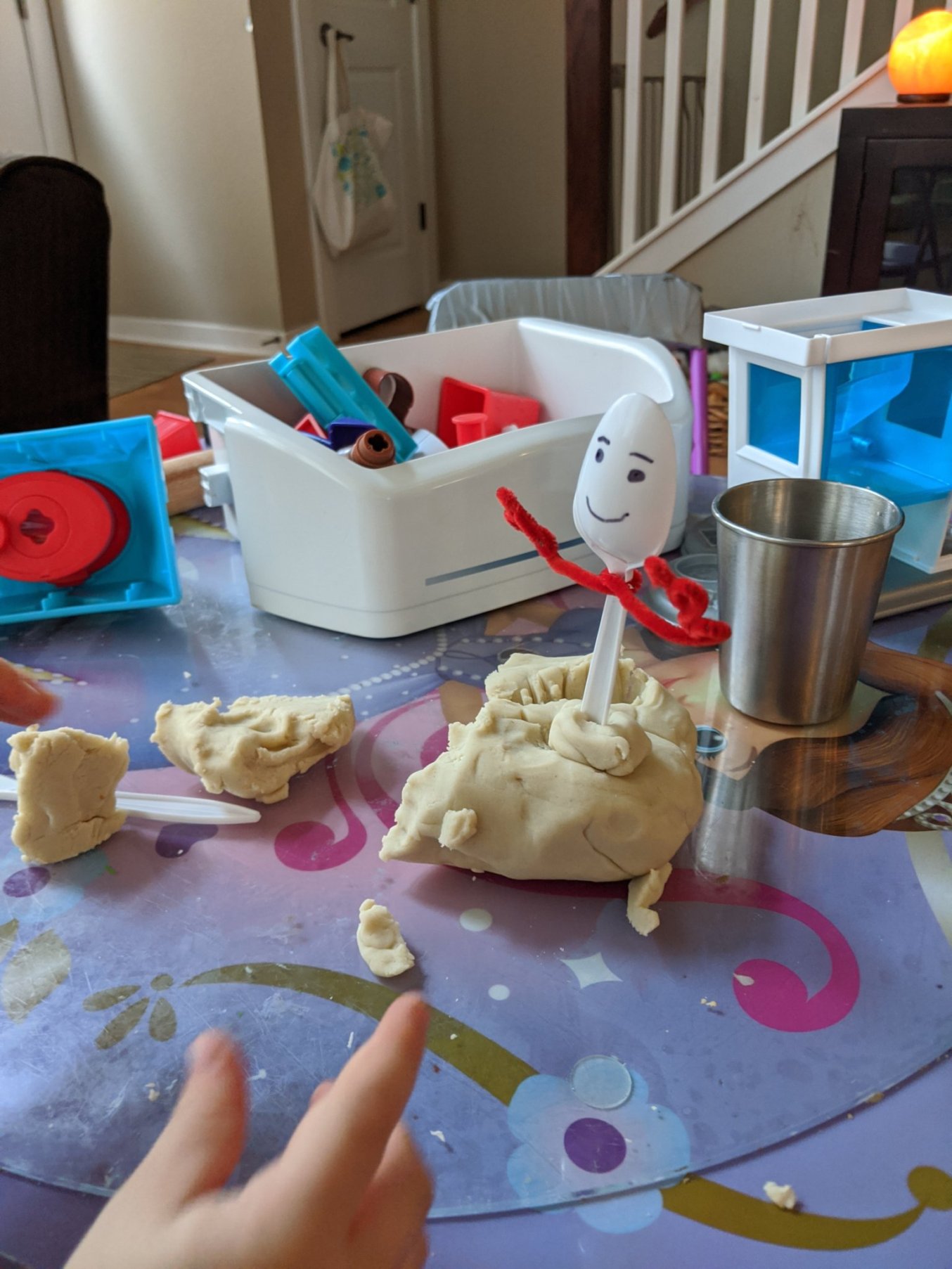Play dough will keep my son occupied for hours. It’s also super easy and cheap to make at home, and you probably have the ingredients already.
Most recipes seem to include flour, salt, cream of tarter, and oil. Coloring is optional. I don’t know about you but I do not have cream of tarter and I cannot find it in the store either (it doesn’t seem to be on the baking aisle), so I use lemon juice. According to Cooking Light, “For every 1/2 teaspoon of cream of tartar in the recipe, use 1 teaspoon lemon juice or white vinegar.” This works well. I’ve tried both lemon juice and white vinger. Lemon juice seems to keep the dough softer but I recommend you try both, you may prefer a different texture.
The homemade play dough we have now is in its third month. My husband made this batch and combined his research so I can’t share the exact recipe with you unfortunately. He can’t remember either so our next batch will probably be different. However all our homemade batches have lasted longer than regular Play-doh, don’t crumble as much, don’t dry out as fast, are technically edible, and are compostable, unlike Play-doh. Since Play-doh’s ingredients are proprietary, I cannot recommend or endorse you composting it when it dries out.
To start with I would recommend trying Wellness Mama’s recommendation for a play dough recipe. I really enjoy all her recommendations. I have used her gluten free (GF) play dough recipe and it works well with normal flour, it doesn’t last as long as this super dough my husband made, but it still lasts longer than Play-doh, so I recommend it.
Dye does better in the water at the beginning; however I have made batches that I separated into four sections and added dye after the fact. After-the-fact is much paler and needs a lot more dye so just keep that in mind. My son doesn’t seem to care if it’s dyed or not so we usually leave it plain. There are plant-based food dyes at more natural stores like Natural Grocers if that appeals to you, that’s what we have if we want a dyed batch.
If you’re stuck inside, Wellness Mama also has a fun list of toddler activities.
Homemade play dough and the supplies can be recycled and composted.
- Flour is available in bulk or paper bags.
- Salt is available in bulk or cardboard tubes or boxes.
- Oil comes in bulk, glass, or plastic.
- Lemon juice comes from a lemon, or plastic or glass bottle.
- Food coloring can be made at home from natural ingredients or bottles that are plastic. The bottles are tiny so they’ll need to be recycled at the Hard Plastics station at the Recycle & Reuse Drop-off Center.
Homemade play dough works just fine in the play-sets, the two I’ve tried at least. If it seems a bit sticky, you can let it dry out a tad or add a bit more flour before using. I find that real Play-doh is usually way more sticky on the play-sets than my homemade play dough and is actually easier to use in the play-sets than Play-doh.

I’ve tried plastic zippered bags, yogurt containers and Pyrex/Anchor for the play dough storage and can say that the Pyrex/Anchor is working the best. My son can open and close it and it keeps the dough the right consistency. The container also holds up better. This is a smaller rectangle he can get out himself from the cabinet.

If you do have regular Play-doh and play-sets that no longer work, these can be recycled. The lids and containers smaller than a credit card should be taken to the Hard Plastics station at the Recycle & Reuse Drop-off Center. These small bits fall through the single-stream sorting equipement. Any play-set that breaks can also be taken to this station, or put in your blue curbside recycling cart.
Again, as Play-doh does not publish its ingredients, I do recommend any and all dried Play-doh be put in the trash.
Do you have a go-to homemade play dough recipe? Please share.
You may also like:
